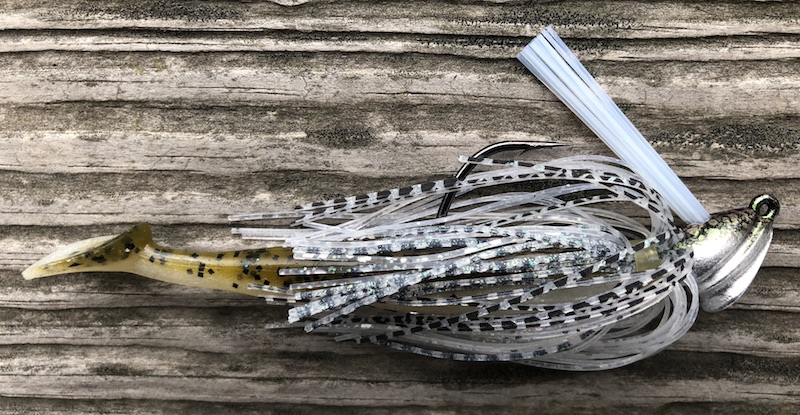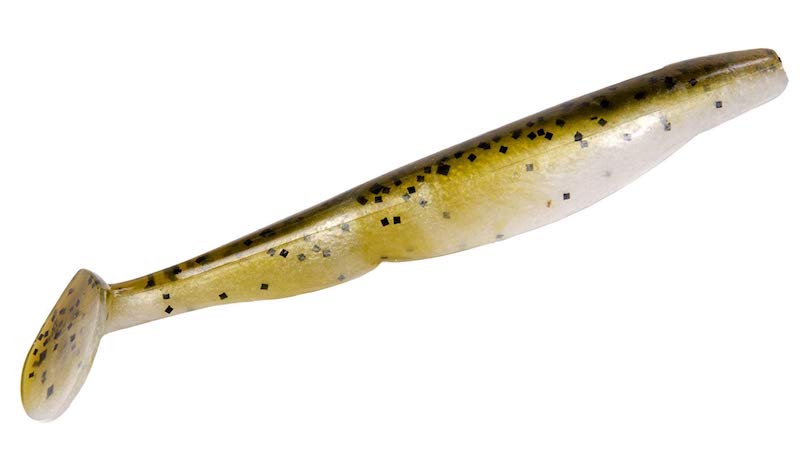
Since the beginning of bass fishing, anglers have been fishing jigs on the bottom. A jig is one of the oldest and original bass lures that is still being thrown today.
It wasn’t until recent years that swimming a jig became a very popular technique for catching bass. Nowadays, you will hardly talk to a bass fisherman who hasn’t, or doesn’t regularly fish one.
The only real difference between an conventional casting jig and a swim jig is the shape of the head. Swim jigs have a pointed nose with a vertical line tie so that they can swim through the water and slip though cover easily.
Most of the weight of the head will be geared towards the bottom of the jig so that it swims upright. Some swim jigs even come with eyes on the head so it looks more like the head of a baitfish.
If you’re in the market for a swim jig then check out the Original BiCO Jig. Not only is it one of the best swim jigs out there, it’s versatility allows it to be fished as a flipping jig that stands up on the bottom. Here is a picture of one rigged up with a Swim’n Caffeine Shad.
Swim Jig Trailers
Just like with any bass jig, a swim jig is always paired with a trailer. The best jig trailers for swim jigs are paddle tail trailers, because when fishing a swim jig you are almost all the time trying to mimic a baitfish. You can certainly swim a jig with a craw trailer and anglers do it all the time, but paddle tail trailers are far more commonly used.
The trailer on a swim jig is what gives the bait it’s action, so you would never want to use a do-nothing trailer like you would on a casting jig. As a swim jig is retrieved, you want the tail of the trailer to kick side to side. This kicking motion presents itself as a nice visual attraction to a bass, as well as creating some disturbance in the water that a bass can sense. Although the disturbance is very subtle, bass will still be able to detect it.
Here is a better look at the Swim’n Caffeine Shad rigged on the jig in the photo above. It is the four inch one, but in the photo above a little bit was cut off the head to shorten the profile of the bait.
Swim Jig Fishing
What separates a swim jig from other power fishing lures is that it doesn’t put out the flash, thumping, rattling, or knocking sounds that noisy power fishing lures typically have. And although a lot of times bass do like noise, there are certainly times when less noise is going to get more bites. This subtle action from a swim jig can be a huge advantage in clear or calm water when you don’t need all that extra noise.
But the biggest advantage a swim jig has over other power fishing lures is it’s ability to be fished in cover. Swim jigs come equipped with a fiber weed guard that allows the bait to be swam right through the middle of grass beds and other vegetation without getting hung up. Take full advantage of this because bumping in to weeds and ripping through them is often what causes the reaction strike that makes a swim jig so successful.
Swim jigs are best fished with fluorocarbon because it’s clear and it sinks, but if you are fishing in thicker vegetation all day then braid is more favorable. The thick vegetation will disguise the braid and give you a better chance of horsing fish out of the weeds.



